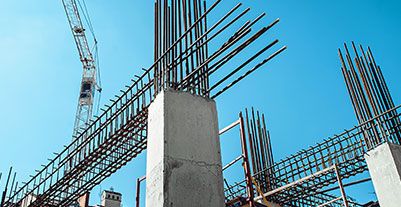Differences between home loans and construction loans
A major difference between the two is the end use of the two sanctions. Borrowers avail of home loans to purchase already constructed properties, under-construction properties, or to buy those that will be constructed in the future while construction loan is opted to construct a building, whether for residential use or investment purposes.
Lenders offer home construction loans for paying the costs of constructing a residential unit or building a home on a plot of land that may be within your existing property. They offer it for the period when the construction work is in progress. The property being financed secures the loan, and the lender will intermittently make sure the funding is being used for that purpose.
Home loan and construction loan are both types of loans that relate to property, but they serve different purposes and have distinct characteristics. Here are the key differences between the two:
1. Purpose:
- Home loan: A home loan, also known as a mortgage, is used to finance the purchase of an already constructed property, such as a house or a flat.
- Construction loan: A construction loan, also known as a self-build loan or a home construction loan, is specifically designed to fund the construction of a new property or the substantial renovation of an existing property.
2. Disbursement:
- Home loan: In a home loan, the entire loan amount is disbursed to the borrower in one go at the time of property purchase.
- Construction loan: In a construction loan, the disbursement is done in stages, known as "draws," as the construction progresses. The funds are released as per the milestones achieved in the construction process.
3. Interest rates:
- Home loan: Home loan interest rates are typically lower than construction loan rates since lenders consider completed properties to be less risky. You can get a home loan from Bajaj Finance at an interest rate starting from 7.99%* p.a.
- Construction loan: Construction loans often come with higher interest rates due to the higher risk associated with the ongoing construction process.
4. Repayment:
- Home loan: Repayment of a home loan starts immediately after disbursal, based on the agreed-upon terms, which may include EMI or other repayment structures.
- Construction loan: During the construction phase, the borrower usually pays only the interest on the amount disbursed. After the construction is completed, the loan is typically converted into a regular home loan, and the borrower starts repaying the principal along with the interest.
5. Documentation:
- Home loan: Home loan documentation primarily involves property-related documents like sale agreements, property papers, and title deeds.
- Construction loan: In addition to property-related documents, construction loans require detailed project plans, cost estimates, and approvals from relevant authorities.
6. Loan term:
- Home loan: Home loan tenure can extend for several years, typically ranging from 10 to 40 Years.
- Construction loan: The construction loan tenure is usually shorter, usually limited to the construction period, which can vary depending on the project's scale.
Another point of comparison is the interest rates applied to these loan types. Lenders usually charge similar interest rates for both offerings. However, home loan rates may be a few basis points lower than the interest rates for home construction loans. This may be dependent on a few factors, one being the profile of the borrower.





